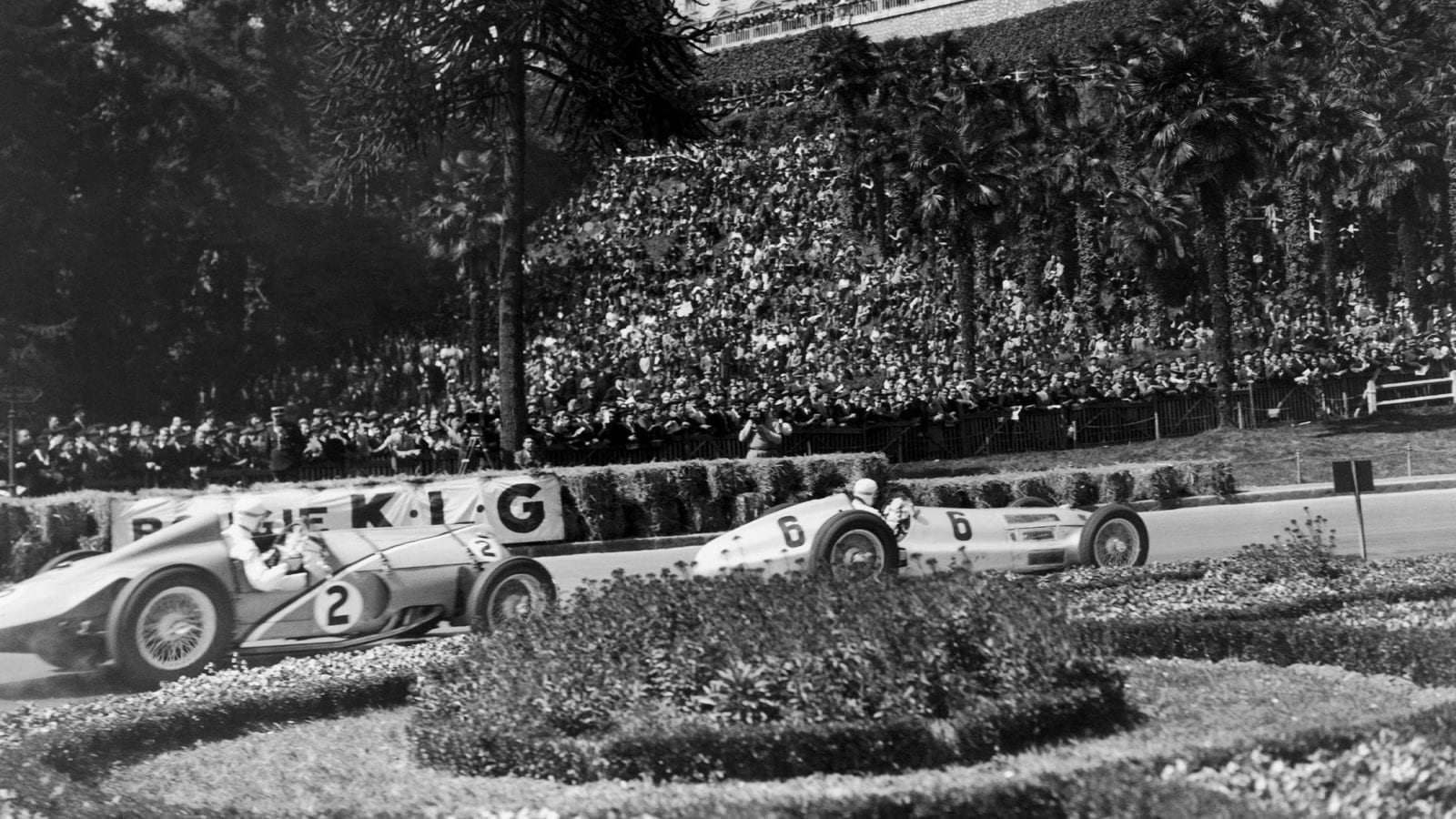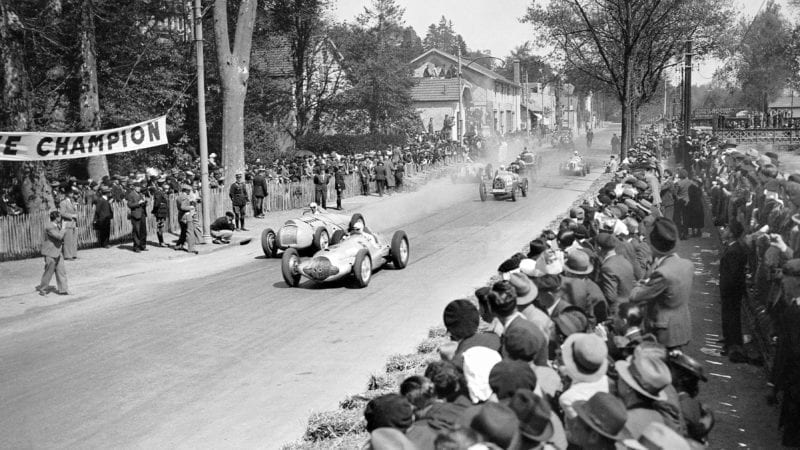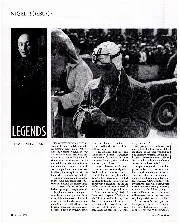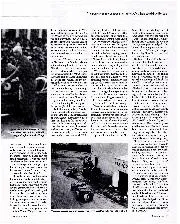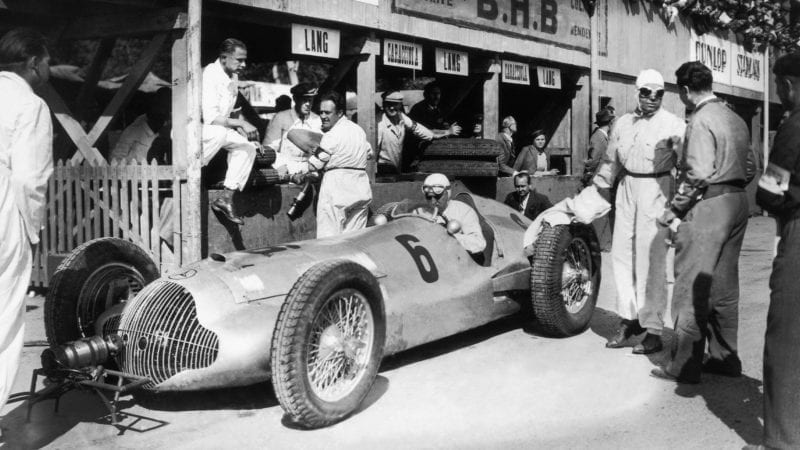One thing that Huhnlein and Mrs Schell had in common was almost unlimited funds. The German teams were funded with the help of state reichmarks; Ecurie Bleue was financed out of her $5 million fortune. She was the only daughter of Patrick O’Reilly, a poor Irish immigrant who achieved the American dream by becoming one of the steel barons who built New York’s subway.
But she was no racing dilettante. She was the first American woman to drive in an international grand prix. And following the announcement of the new 1938 formula in 1936, she walked with her bulldogs into the Paris office of Charles Weiffenbach, the elderly MD of Delahaye, and informed him she wanted to order a couple of new V12 GP cars (which hadn’t even been designed yet) for the 1938 race season. Before her 1935 inheritance, she had already impressed Monsieur Charles (as Weiffenbach was known) by racing as a member of the Delahaye rally team, first as a private entrant, and then forcing her way through the ranks to become a works driver. Her husband Latuy, a meek figure who belongs in the pages of a Somerset Maugham novel, also raced, and was an occasional driver for Ecurie Bleue.
The new 4.5-litre V12 Delahaye Type 145 was first tested by Dreyfus was at Montlhery, without fanfare or invited press, in June 1937. On its first public outing, the appearance of this pug-nosed two-seater came as something of a shock to the few Ecurie Bleue friends and guests present Later, Dreyfus himself was to confess that, “It was the most awful-looking car I ever saw”.
Certainly the Germans were not unduly concerned. A sharp illustration of just how seriously Huhnlein took his orders from Berlin to ensure Nazi supremacy on the track was revealed a month later, on August 27, when Dreyfus’s Delahaye was battling it out at dusk on the Montlhery track with Bugatti’s star driver, Jean-Pierre Wimille, for the much-hyped Prix du Million. So anxious were the French to create a racing car capable of beating the Germans, after endless humiliating defeats, that the government had put up a lottery prize of a million francs for any car that could average 146kph for 16 laps or 200km at Montlhery (this being the speed Louis Chiron achieved in 1934 driving a Tipo B Alfa Romeo while outperforming the Germans under the old formula).
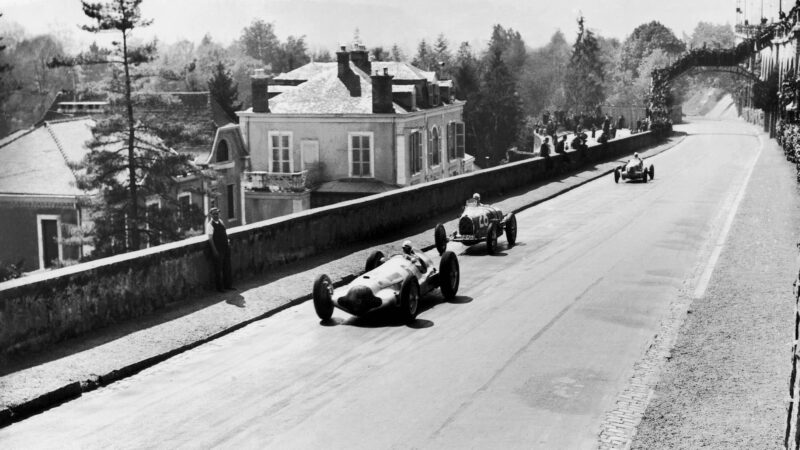
Caracciola heads Maurice Trintignant during the race
Keystone-France/Gamma-Keystone via Getty Images
Although the German teams were busy preparing for the Italian GP in Livorno on September 12, Huhnlein took the trouble to ensure the huge crowd of press and photographers that witnessed this memorable Ecurie Bleue / Bugatti duel (which Dreyfus narrowly won) included a spy from the Mercedes technical department. Despite the Delahaye victory, the spy told his superiors they had nothing to worry about for the 1938 season.
To be honest, when the two Ecurie Bleue transporters set off for Pau, nobody in the motoring press thought Lucy Schell had any chance against a lineup that included the exciting W154, the new monoplace supercharged 3-litre Bugatti, or Tazio Nuvolari in one of two new eight-cylinder Alfa Romeos (Tipo 308) managed for the new Alfa Corse team by Enzo Ferrari. Against this opposition, Ecurie Bleue was entering a pair of outdated-looking, two-seater ‘bathtub’ road cars — more of a sportscar than a GP car. They were painted duck-egg blue, with red trimming.
Auto Union, who had lost number one driver Bernd Rosemeyer in January during a Nazi speed record attempt, had decided their new cars weren’t ready to race. But the arrival in Pau of the multi-truck Mercedes convoy, after a winding journey through France supervised by manager Alfred Neubauer, was described by the normally unfazed Dreyfus in his autobiography as “awesome”.
